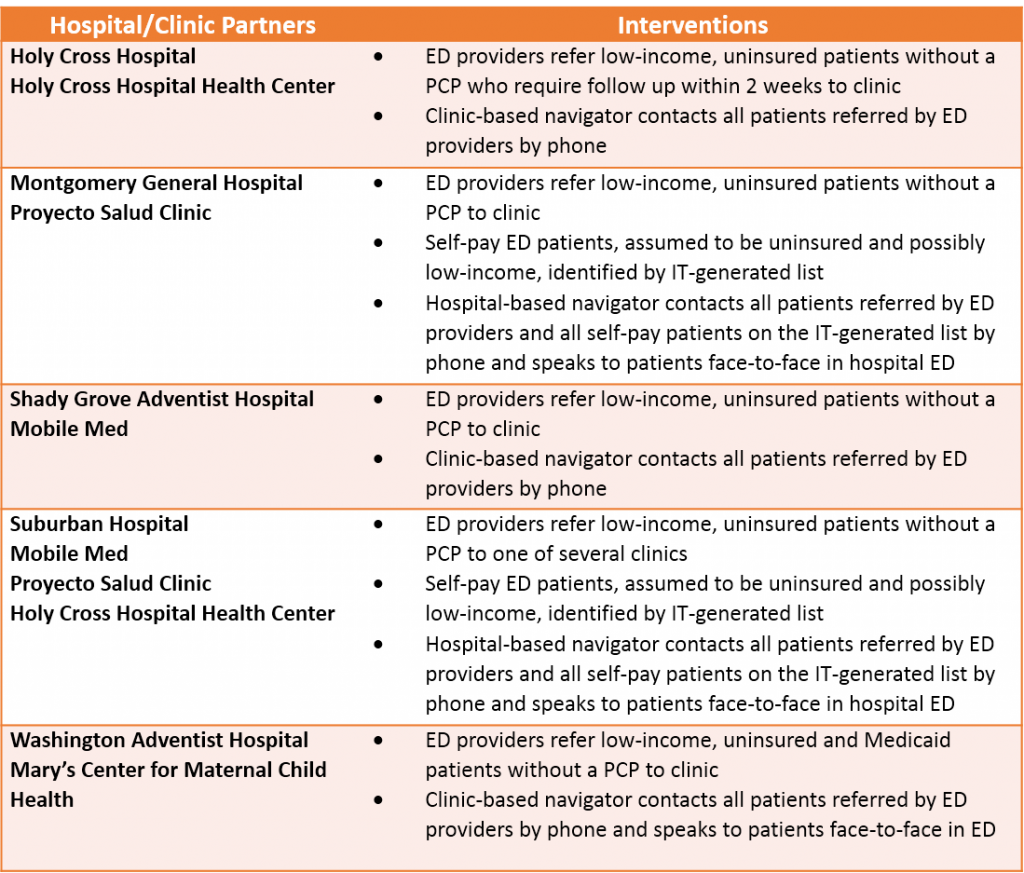Background
Emergency departments (EDs) serve a unique purpose in the US healthcare system, as they provide a full range of services to patients, regardless of their ability to pay, at any time of day. Demand for these services is increasing; between the years of 1997 and 2007, American emergency departments saw a 25% increase in patient visits, to approximately 116.8 million visits per year.
This rise in visits, accompanied by nationwide trends of emergency department closings and fewer inpatient beds, has led to the phenomenon of ED overcrowding. The consequences of over-taxed emergency departments are felt at every level of care. Hallway boarding of admitted patients until in-patient beds become available is commonplace, limiting patient privacy, and reducing quality of care due to less timely receipt of services and less availability of specialized care than in in-patient settings. Doctors and nurses are in turn forced to split their time attending to boarded patients and new arrivals, leading to increased wait times for incoming patients with minor or serious illness. A 2007 patient survey by the consulting firm Press Ganey found that patients in Maryland spent an average of 4 ½ hours and that patients in Virginia spent an average of 4 hours and 45 minutes in the ED, placing Maryland 42nd and Virginia 46th out of 50 states, among the longest waiting times in the nation. Additionally, ambulance diversion increases the time it takes before a patient can see a doctor, and increases the time that ambulances are available for other patients. Montgomery County EDs alone went on diversion nearly 5,000 times between 2004 and 2009, and diversion has been cited as a significant issue across the region.
A number of factors have contributed to ED crowding. EDs are obligated to serve all patients; therefore, they are often used as a regular source of care for patients without a primary care physician (PCP). As these patients are more likely to be uninsured, this care often goes uncompensated on the part of the hospital. Additionally, patients who do have regular physicians increasingly visit the ED for after-hours or weekend care, or at the referral of their PCP, for tests or procedures that physicians cannot easily perform in-office. Finally, hospitals sometimes have financial incentives to promote ED utilization by patients with insurance; it has been estimated that 34% of total gross revenue for inpatient services is generated by patients admitted through the ED, and ancillary testing during ED visits is another steady source of revenue.
Reducing the amount of avoidable ED utilization—that is, for conditions that are either non-urgent or that could have been treated or prevented by prior primary care—has been identified as a means of reducing pressure on EDs and increasing their capacity to treat emergent cases. Almost half of emergency department visits are considered “avoidable”. This is problematic from both cost and quality standpoints. As mentioned above, surges in avoidable visits have contributed to overcrowding, which worsens outcomes for patients with emergent conditions. However, patients visiting the ED for ambulatory care-sensitive conditions are also negatively impacted, as they receive more episodic care than that provided by a PCP. The continuity of care provided by PCPs offers many benefits, including enhanced clinical diagnostic accuracy and treatment, a focus on prevention, and enhanced patient adherence to treatment regimens. For the nearly half of Americans suffering from at least one chronic illness, and those battling addiction or behavioral health disorders, continuity of care is especially important. Furthermore, although there is no consensus on the matter, studies estimate that ED visits for ambulatory care-sensitive conditions are two to five times costlier than a primary care visit for the same condition.
ED-PC Connect
A report by the Maryland Health Services Cost Review Commission showed that 1/3 of all Montgomery County ED visits were made by low-income uninsured and Medicaid-insured patients. Furthermore, in FY 2008 alone, these patients incurred more than $12 million in charges, nearly half of which were avoidable. At that point in time, Montgomery County was home to five non-profit hospitals, as well as a robust primary care system. The Primary Care Coalition of Montgomery County (PCC) launched the ED-PC Connect project in 2009, with funding from an Emergency Room Diversion Grant from the Centers for Medicare and Medicaid Services through the Maryland Department of Health and Mental Hygiene, to reduce avoidable ED utilization by leveraging these community resources. The project aimed to link low-income uninsured and Medicaid patients to a medical home by referring patients from hospital emergency rooms to safety net clinics. A study evaluating the results of the project was published in Health Affairs in May 2015.






